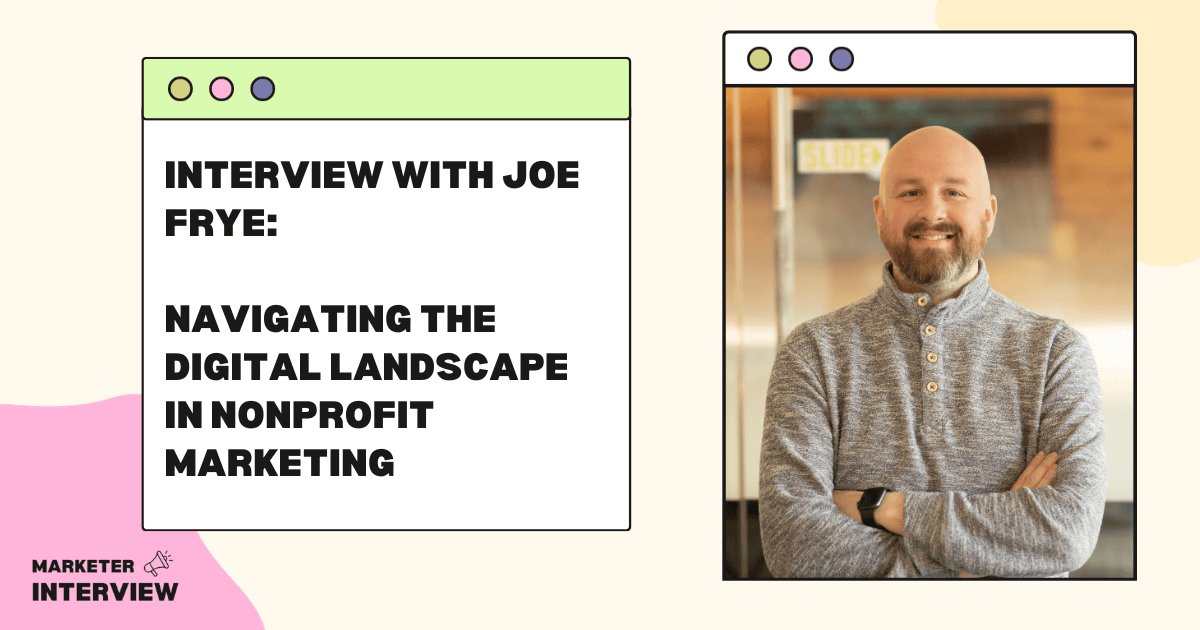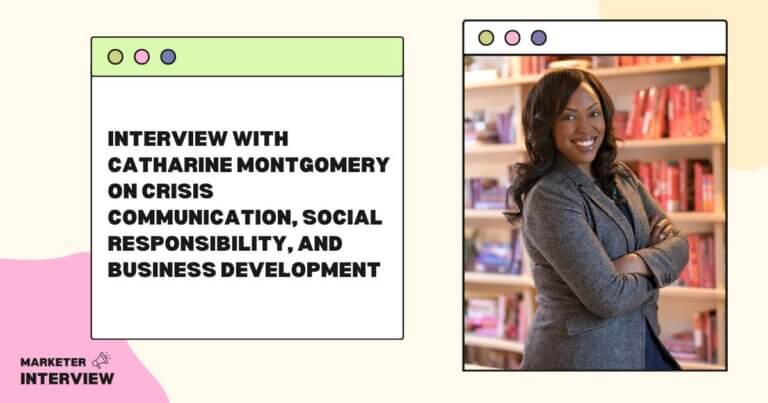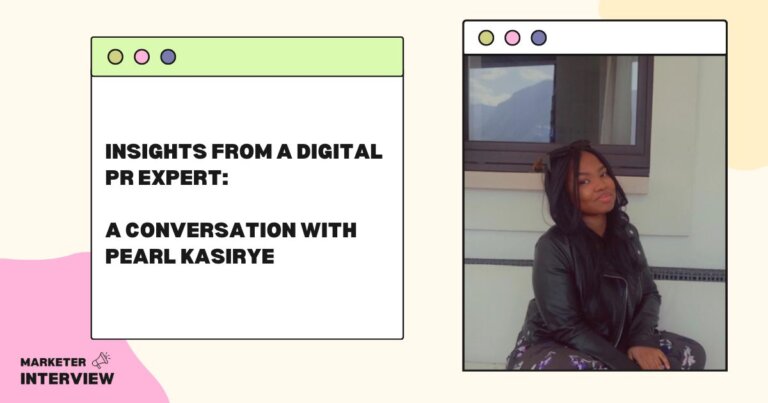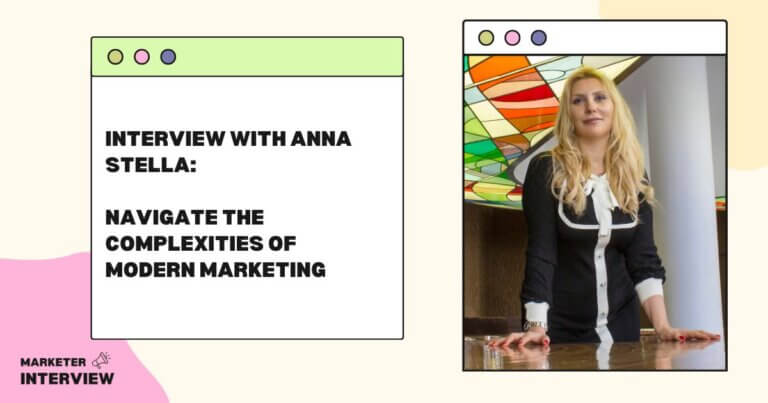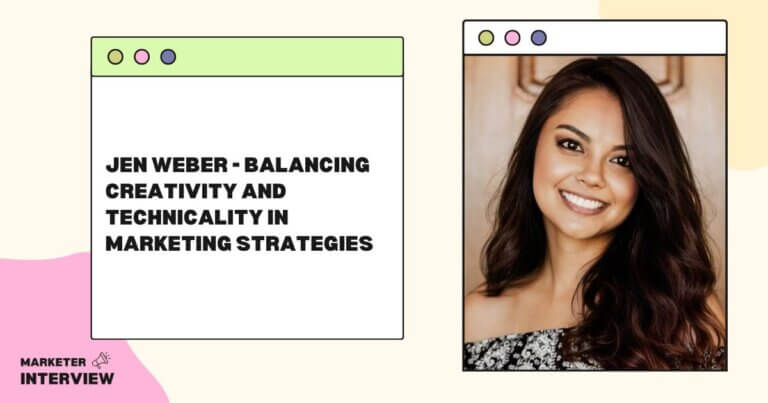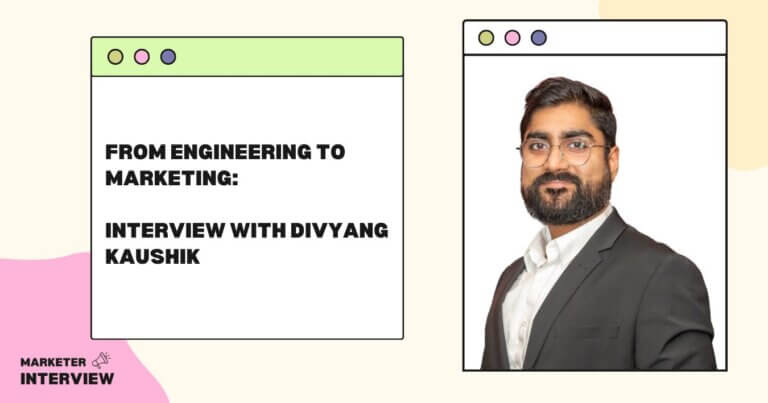Interview with Joe Frye: Navigating the Digital Landscape in Nonprofit Marketing
Welcome to Marketer Interview, where we delve into the minds of exceptional marketers shaping the industry. In this edition, we’re excited to sit down with Joe Frye, an accomplished Account Group Director specializing in Nonprofit & Cause marketing.
Joe’s journey spans various sectors, from large corporations to grassroots nonprofits, offering a unique perspective on digital strategy, technology, leadership, and the intricate world of digital and content marketing.
Join us as we unravel the insights and experiences that have defined Joe’s dynamic career.
Contents
- 1 How did you find your way into marketing, particularly in the nonprofit sector?
- 2 Could you share a pivotal moment or project that significantly influenced your career trajectory in digital marketing?
- 3 Given your diverse experience across for-profit and nonprofit organizations, how do you navigate the unique challenges of each sector in your role as an Account Group Director?
- 4 In digital strategy, what trends do you find most impactful for nonprofits, and how do you incorporate them into your campaigns?
- 5 Can you elaborate on your approach to leveraging technology for nonprofit causes? Are there any specific tools or platforms that have been game-changers for your team?
- 6 Email marketing remains a powerful tool. How do you ensure that nonprofit email campaigns effectively engage and inspire your target audience?
- 7 Content marketing is evolving rapidly. How do you keep your content strategies fresh and relevant, especially when communicating the values of nonprofit organizations?
- 8 Leadership is crucial in any field. What leadership principles guide you when managing teams focused on nonprofit and cause-driven initiatives?
- 9 Considering the evolving landscape, how do you see the future of digital marketing for nonprofits, and what advice do you have for marketers entering this space?
- 10 Are there any specific challenges unique to nonprofits that you’ve encountered in your career, and how do you overcome them to achieve successful outcomes?
- 11 As an Account Group Director, what essential tools and software do you and your team rely on to manage and optimize nonprofit campaigns?
How did you find your way into marketing, particularly in the nonprofit sector?
I guess you could say I’m a product of my environment. Growing up, my dad worked in emergency management, and my mom loved stories.
As a kid, I always built Lego landscapes and created stories around them. When I got older, I loved writing fictional stories about the people I saw around me. And when I went to college, I had no idea what I wanted to do, but I knew I wanted to tell stories and connect with people. This ultimately led me to pursue a Journalism degree. Through several internships where I was trying to figure out what I wanted to do after graduation, I fell into marketing and technology with an internship at PBS.
In my early career, I loved the act of marketing and the intersection of technology and storytelling. Something was missing when I left PBS for a more commercial environment.
After a few years, I found an agency at the intersection of technology, data, and storytelling and fell in love with the agency world. It’s a fast-paced environment that allows me to connect with many people and tell many stories.
I jumped at the opportunity to work with Town Hall, a marketing agency that works with nonprofits, educational institutions, and mission-driven organizations.
There’s been a lot of moments that have shaped my career and approach to marketing. I’m lucky to have had one of these moments early in my professional journey – within the first two weeks of my post-college career.
I worked with PBS and was tasked with updating the content in newly launched iOS apps. I made a mistake that caused the apps to break. I missed this, but someone else did and brought it up to my supervisor. She showed me the broken apps and asked what went wrong. I had no idea.
She told me to figure it out and fix the issue. I had never experienced anything like it. It was my first “real job,” and I had no idea how apps worked – I had barely scraped by in my CS classes in school. I struggled for a couple of hours until I had a moment of clarity and thought to retrace my steps – to try to update the app content.
I followed my handwritten instructions, and things seemed to be fixed. I tested the app to ensure I had fixed the issue before telling anyone.
When I told my supervisor I had fixed the issue and told her what had happened, I expected to be scolded for not QAing my updates. Instead, she tested the apps, smiled, and said, “Welcome to the team.” I didn’t know what to say. She followed this up with an explanation, “you’re not a member of this team until you break something. And when you do, you need to be the one to fix it so that you understand how it works. Mistakes just mean you’re contributing in a meaningful way.”
It doesn’t sound like a marketing moment (and maybe it’s not), but it’s a moment that shaped my career. It lit a fire under me to understand how things work (even if I can’t build them). It showed me the power of a team and taught me to take ownership of my decisions.
Throughout my career, there have been countless situations where I didn’t have the answer but had to figure it out. This has resulted in some of the most successful campaigns I’ve run. These are the most rewarding digital experiences I’ve architected. The most impact I helped create.
All organizations – even organizations within the same sector – are unique. The staff has different personalities. The organizations have different success stories. They often use different technology. The list of differences can go on and on.
At the same time, many for-profit and nonprofit organizations are similar. Success is revenue. Engagement is often measured in mentions and likes. Stories are told to similar audiences. Again, the list can go on and on.
People get hung up on the differences and similarities between organizations. Being able to compare things provides a feeling of comfort. It’s why there are so many sequels in movie theaters, job descriptions listing industry-specific experience, and ratings and rankings.
The challenge with creating comparisons is that you often stop looking internally and start looking externally at factors you often can’t control. You stop innovating trying new things, and end up chasing someone else.
When I work with organizations, I meet them where they are. This means collaborating with them through a series of knowledge-sharing exercises that allow me to get to know them and where they are so that we can put a plan in place to move them forward.
Success – regardless of the industry – requires a connection between people and organizations. This requires listening. It means defining value and delivering on brand promises. It means creating opportunities for people to connect and be an ongoing part of the story. Dollars might measure it in the door, but that requires a connection between people and organizations.
Successfully navigating the challenges of different sectors means breaking the challenges down into a series of more minor hurdles that can be overcome. Asking “How might we” instead of saying “we can’t do this or that” is a mindset shift that helps me and my team.
When I broke the iOS apps, it seemed like a huge problem. I was flustered. The issue seemed like something that was beyond me. When I took a moment and went step by step through the process, it turned out to be a little thing I could control.
In digital strategy, what trends do you find most impactful for nonprofits, and how do you incorporate them into your campaigns?
To succeed digitally, you must adopt the mindset that things are constantly changing and must continually evolve. You also have to understand there are no guarantees in marketing.
My team and I try to set aside a small portion of our efforts to innovate and try new things. This might mean new things for a particular organization or an industry. This does a few things: it allows ideas to shine. It means looking within instead of outside of your organization.
With that being said, here are 5 trends that I see having an impact:
1. Content Personalization:
Strong storytelling will always be impactful. The vehicle the story is delivered through will continue to change, but a good story that provides an emotional connection will always win. The personalized digital experience will help foster this connection.
Personalization is one of the most significant digital elements that can ensure the right story is shared with the right person and includes the right ask to empower the person consuming the story to act meaningfully.
2. Communication Channels:
There’s a lot of potential for nonprofits to understand their supporters’ channel preferences. What’s an email today? It might be an email to some people, a text message to others, or a Messenger message to others. The story might be the same, but personalizing the delivery method can significantly impact story consumption.
3. Payment Options:
Providing choices without creating decision fatigue can significantly impact giving. During COVID, we saw increased Venmo donations and other peer-to-peer solutions.
There are many ways people can donate to Amazon Pay, Apple Pay, Google Wallet, checks, credit cards, and cash. Like communication channel preferences, donation method preferences can reduce friction and increase donations.
4. Digital Ecosystem Expansion:
Sometimes less is more, but sometimes it isn’t. I’m a big proponent of multi-use content. So, when you create an annual report, how is that used to create 15, 20, or 25 pieces of content to feed the marketing machine you need? This often means expanding your ecosystem in an organized, strategic way.
5. Integration: When I talk with nonprofits, the topic of integration always comes up. Often, tech stacks are put together piece by piece, and the integrations are never entirely made. This is necessary
Can you elaborate on your approach to leveraging technology for nonprofit causes? Are there any specific tools or platforms that have been game-changers for your team?
In my experience, it’s less about the specific tools and more about the ability to utilize those tools fully. This is where I see nonprofits fall into the trap of needing a new tool to do one thing when there are other ways to do it within their current martech stack. This is why continued investment in training is essential.
Success requires people, processes, and platforms (tools). At the intersection of these three Ps, success can be achieved through pushing the envelope and working together in an organized way to use the tools available better.
This is the approach I took with one organization using HubSpot for their email marketing. We learned much about what their audience wanted by setting aside time and creating a process to track their users’ behavior through tags better. We ultimately increased donations by more than 262% year-over-year.
That said, the tools that make the most significant impact allow personalization, flexibility, and scale. So robust personalization within email marketing platforms like HubSpot is excellent.
Idomoo is another powerful personalized video tool that can make personalized videos achievable when used to their fullest. Websites outside of a scalable CMS providing flexible page creation give me pause. My team and I love WordPress for this.
I also need to talk about AI a bit. I’m a big fan of generative AI tools, but I encourage nonprofits to use AI to help analyze their donor databases. Using third-party tools lets you know their preferences better than built-in tools.
Email marketing remains a powerful tool. How do you ensure that nonprofit email campaigns effectively engage and inspire your target audience?
Email is a great delivery vehicle for content because it’s one of the only digital channels allowing you to speak to audiences you already know want to support you.
I believe that success in any digital channel, especially email, requires trust, and the best way to achieve trust is to engage with people. Listen to what they’re looking for and provide value. I talk with many organizations about brand promises and at the base of all communications, ensuring that organizations live up to their promise. Emails are intimate. Someone has invited you into their inbox. To stay there requires work.
Email needs to evolve just like any other channel – having a strategic “test and learn” plan for emails is imperative to ensure they continue to succeed. Just like any relationship, variety is essential in emails. This doesn’t mean they can’t be personalized, but they must do more than ask for support. They need to share information, celebrate success, and provide opportunities for engagement.

Content marketing is evolving rapidly. How do you keep your content strategies fresh and relevant, especially when communicating the values of nonprofit organizations?
A good story allows people to see themselves as a part of that story. It means connecting with the person consuming the story and giving them a way to act once they’re connected. And ultimately ensure that the story is discoverable to new audiences. This is foundational to having good content.
You can’t think of all channels as the same. I work with clients to define the value and purpose of each channel and then to think about their anchor stories and how those could be utilized across different channels and for different audiences. This gives more people more ways into an organization’s impact stories.
Another thing that nonprofits can do is to capture stories using different types of media. It’s easy to say we can’t film this person, so we can’t have video content, but there are many creative ways to create videos. I hate to say it’s more of a mindset, but it’s valid to a certain extent. V-Day is an organization that my team and I have had the privilege of working with on several projects that are great at finding creative ways to tell stories.
Leadership is crucial in any field. What leadership principles guide you when managing teams focused on nonprofit and cause-driven initiatives?
There are several important aspects to creating a great team culture. This stems from the idea that great ideas come from everywhere because all team members have unique life experiences.
Creating an environment where emotional security will foster new ideas is incredibly important when building a collaborative team. The safe spaces I create with my teams allow me to push them to do new things in new ways. This keeps us innovative and encourages growth.
A scarcity mindset in the nonprofit world is challenging to overcome. This, paired with status-quo bias, leads to the perception that nonprofits aren’t innovative and doing cutting-edge things. I believe this is partially why people have grown disconnected from nonprofits – donations are flat or slightly down year over year across most sectors. Trust metrics are reportedly declining as well.
This is why I urge my team to be curious and to push the envelope. Then, we celebrate those traits as a team. There are little to no guarantees in marketing, so thinking about things through the lens of probability is helpful. It allows us to ‘place bets’ on specific approaches and strategies and removes the desire only to do what we’ve done in the past.
Considering the evolving landscape, how do you see the future of digital marketing for nonprofits, and what advice do you have for marketers entering this space?
This is going to be a firehose of advice.
It all comes down to storytelling. People remember stories over stats any day. People want to be entertained and are being hit with hundreds of pleas for their attention every hour, so if you’re going to vie for that attention, don’t do it half-heartedly. The vehicles that the stories are delivered in may change, but the foundation of what makes a good story will stay the same.
You can’t fake authenticity, so tell your stories in authentic ways. This goes for platforms as well. You don’t need to be everywhere, but you must be good at where you are. The digital landscape changes so frequently that it is impossible to be everywhere.
Focus on places that allow you to engage with your audiences and then actually engage with them. Often, this means thinking about how you can connect the physical and digital worlds for your audiences.
Test and learn from everything. This requires a process that allows you to learn and revisit your tests every so often as digital behavior and preferences change. This is more important than looking at what other organizations are doing because it allows you to lead instead of chasing what someone else has defined as success.
Look for inspiration outside of your immediate sector. For nonprofits, this means looking to the for-profit world for inspiration. Corporations spend too much money to change user behavior and influence decisions. Why try to fight this when you can use it?
Netflix recommends what I should watch, Starbucks knows my order and where I should get my drink from when I open the app, and Amazon knows what I will need before I need it.
These things allow my life to be more efficient. 100% of donors are consumers. Only about 60% of consumers are donors. This, paired with corporate budgets and mentality around shaping behavior, means that nonprofits shouldn’t shy away from looking at what the for-profit world is doing.
One final hot take – the way websites are created will change in the near(ish) future. With the rise of generative AI and data lakes becoming more mainstream, I can see a world where user journeys are created on the fly, creating a rabbit hole that supporters go down that keeps going with dynamic content and CTA’s that do not live in a sitemap and are not seen by other users but live in a nonprofit’s ethos. This will drastically change SEO, but the key will always be a sound story library.
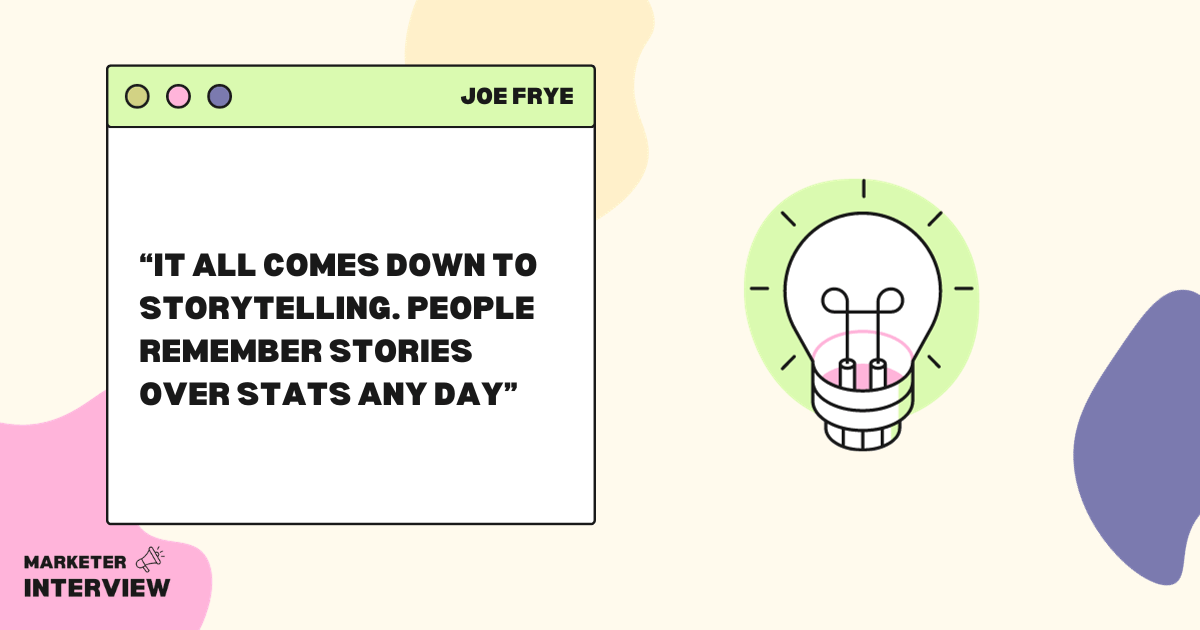
Are there any specific challenges unique to nonprofits that you’ve encountered in your career, and how do you overcome them to achieve successful outcomes?
There are a few that come to mind. There’s a scarcity mentality – the need for immediate results that can cannibalize longer-term success. Status quo bias. The fear of overhead.
Being transparent is the best way I’ve overcome these challenges throughout my career. And I am working harder when mistakes happen. This ultimately builds trust.
As an Account Group Director, what essential tools and software do you and your team rely on to manage and optimize nonprofit campaigns?
There are a few.
We use Asana to stay organized and create project plans. We use Google Docs to collaborate. We work with social media platforms, marketing automation tools, SMS tools, and open-source CMS platforms to allow us to scale digital ecosystems.
We use Google, social, and programmatic ad platforms like the Trade Desk to deliver our client’s messages to various audiences.
We practice what we preach and rely on people, processes, and platforms to scale nonprofits.
